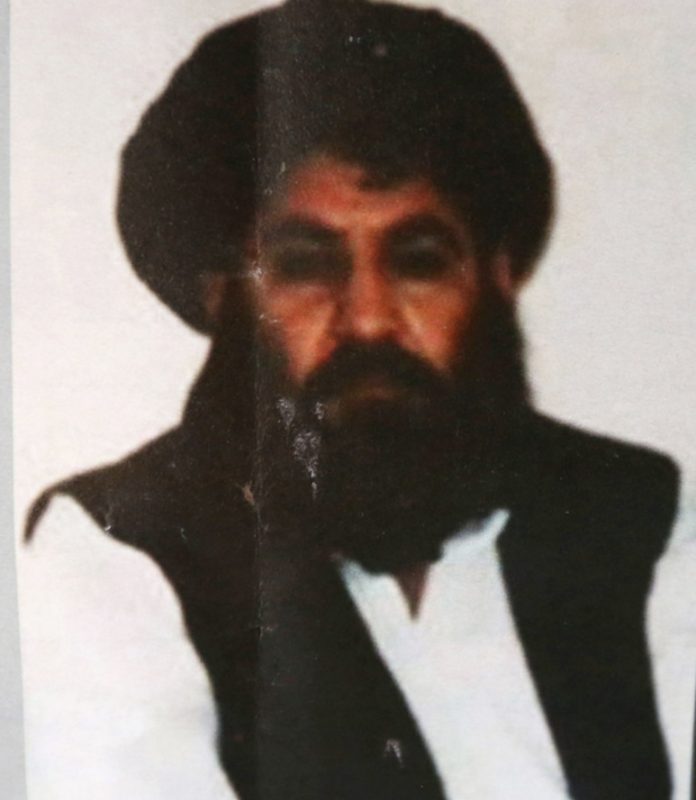
WASHINGTON – The U.S. military launched a drone strike against Taliban leader Akhtar Mohammad Mansour on Saturday, the Pentagon said, dealing a potential blow to the group whose insurgent assaults pose a major obstacle to U.S. hopes for ending the war in Afghanistan.
A U.S. official, speaking on the condition of anonymity to discuss a sensitive military operation, said Mansour was probably killed in the operation, which took place about 6 a.m. Eastern time in a remote area near Ahmad Wal, a town in western Pakistan’s Baluchistan province. President Barack Obama had authorized the operation, the official said.
The operation involved several unmanned U.S. aircraft, and it struck a vehicle in which Mansour was traveling. A second passenger, who officials described as another combatant, also was probably killed, the official said.
Pentagon press secretary Peter Cook, announcing the airstrike in a statement, said Mansour had posed a danger to U.S. and Afghan forces and to local civilians, and he had disrupted U.S.-backed efforts to broker a political solution to Afghanistan’s long conflict.
“Mansour has been an obstacle to peace and reconciliation between the Government of Afghanistan and the Taliban, prohibiting Taliban leaders from participating in peace talks with the Afghan government,” Cook said.
If confirmed, Mansour’s death would be a significant development as Afghan government troops, backed by a small contingent of U.S. and partner forces, prepare to take on an emboldened Taliban during what is expected to be a punishing summer fighting season.
Officials said it was too soon to say what the death of Mansour, who emerged as the Taliban leader in summer 2015, would mean for that fight.
Mansour took on the public mantle as Taliban leader after the news broke that Mohammad Omar, the movement’s iconic longtime chief, had quietly died in 2013.
While Mansour, who had been an aide to Omar and a Taliban transportation minister, prevailed in the initial succession struggle following Omar’s death, he faced significant rivalries within Taliban ranks and, in a sign of the scale of those fissures, was said in unconfirmed reports to have been shot during a meeting of militants late last year.
At the same time, U.S. and coalition officials have been surprised at how quickly he managed to overcome internal divisions within the group. Mansour repeatedly rebuffed outreaches from Pakistan and elsewhere that the Taliban enter into peace talks with the Afghan government.
Instead, according to U.S. and Afghan military officials, he called on the Taliban to fight at least through this year to see whether the group could maximize its strategic bargaining position. Mansour also infused the leadership of the Haqqani network, which for years operated as a somewhat independent offshoot of the Taliban, into his command structure.
Sirajuddin Haqqani was named as Mansour’s top deputy. And in recent weeks, Brig. Gen. Charles H. Cleveland, chief spokesman of coalition forces in Afghanistan, has stated that Haqqani has been taking a leading role in planning battlefield strategy.

